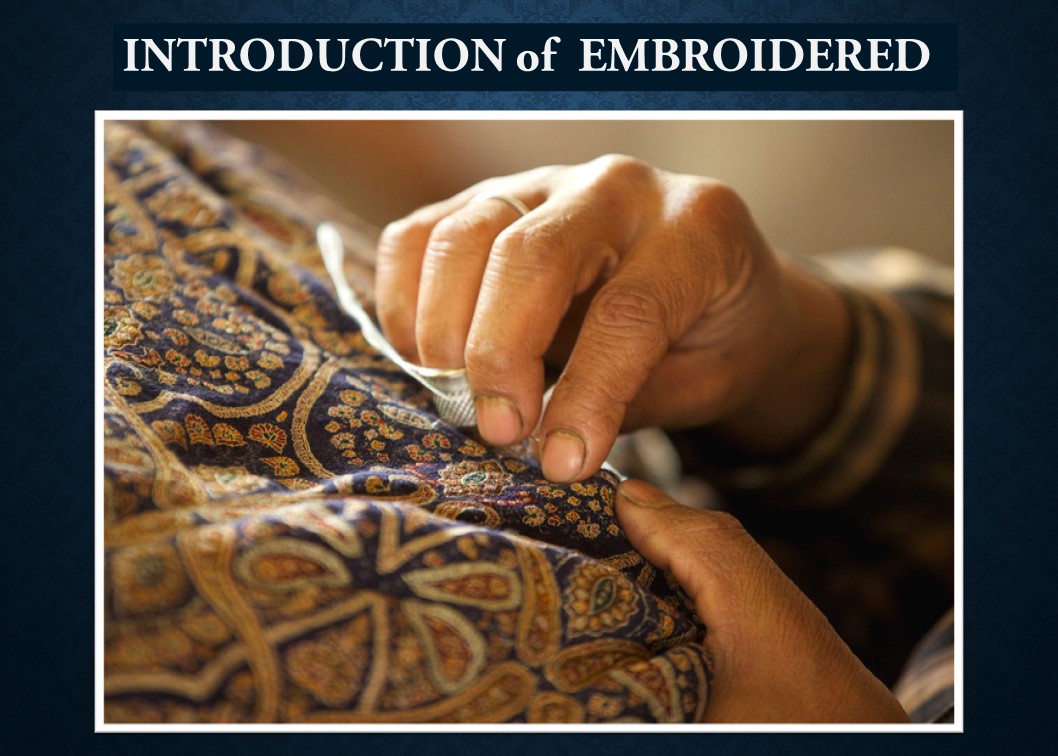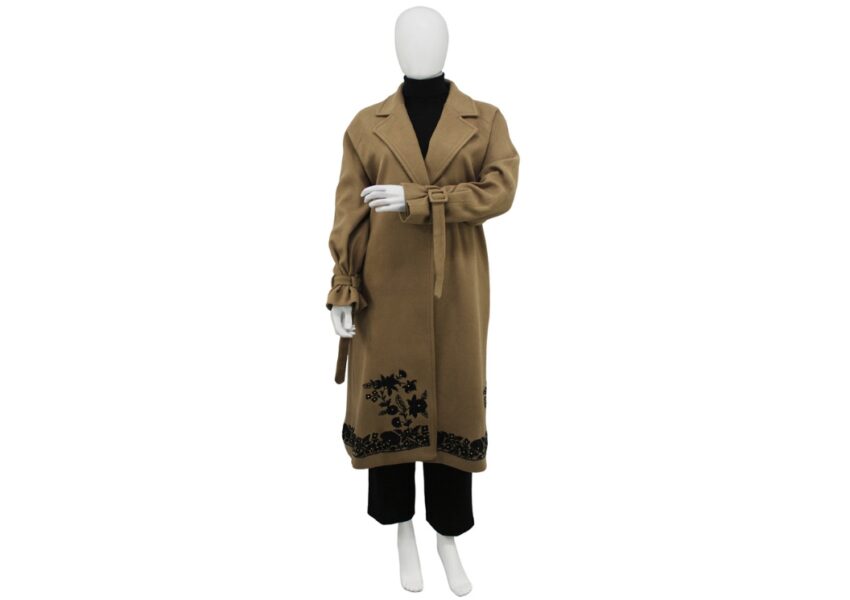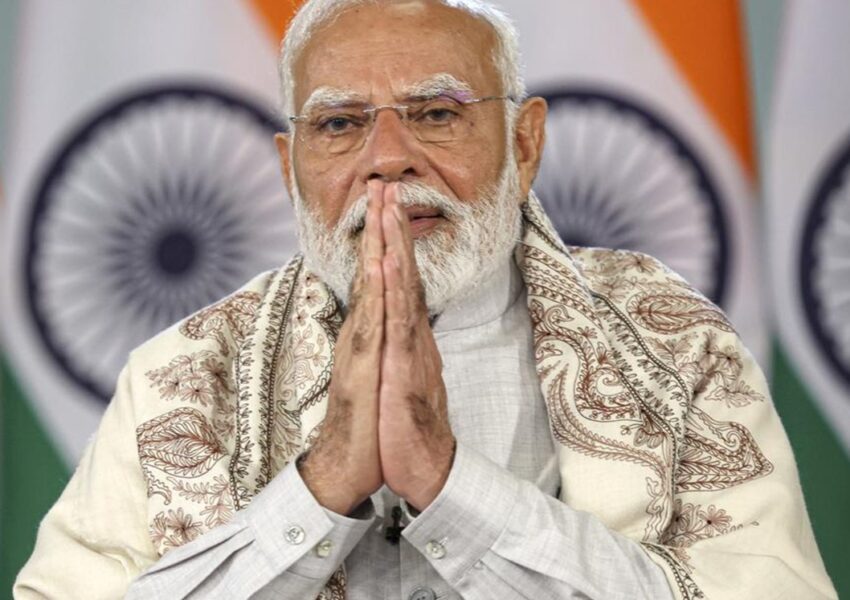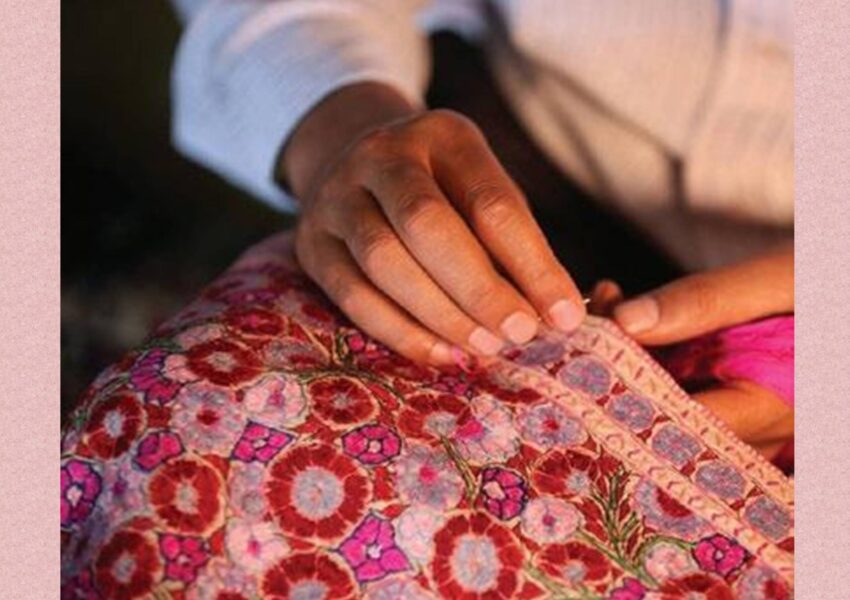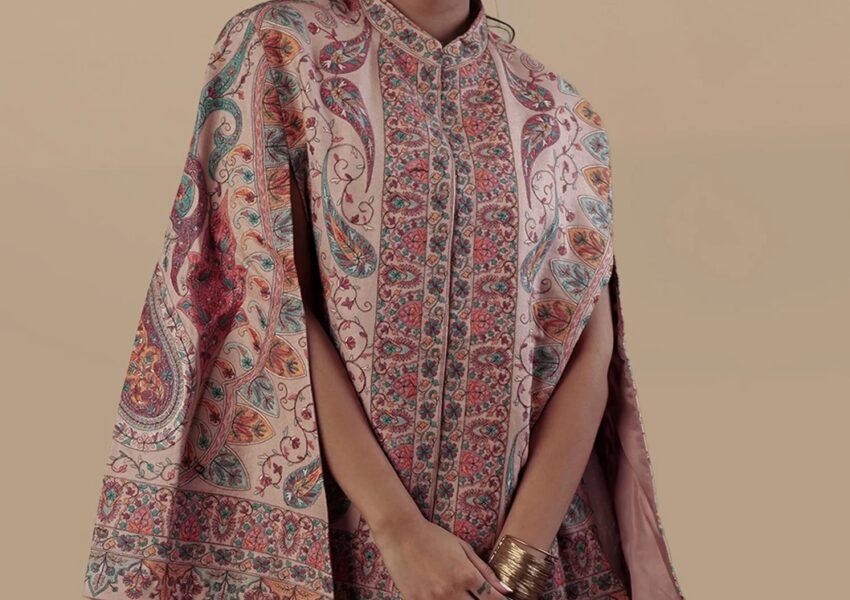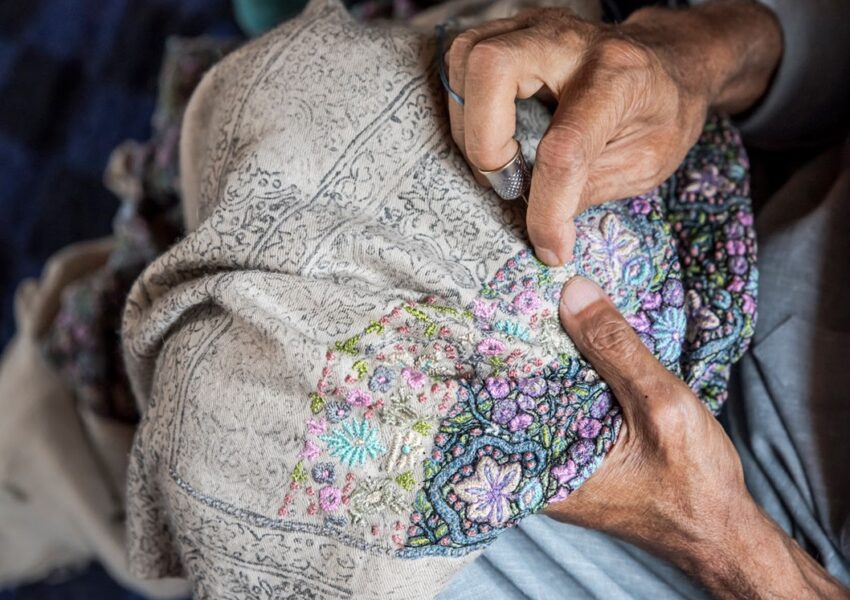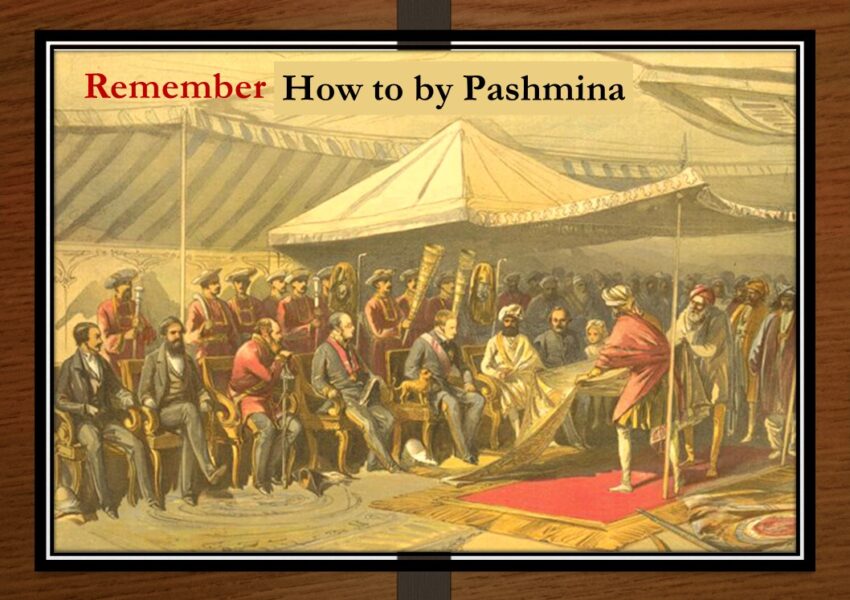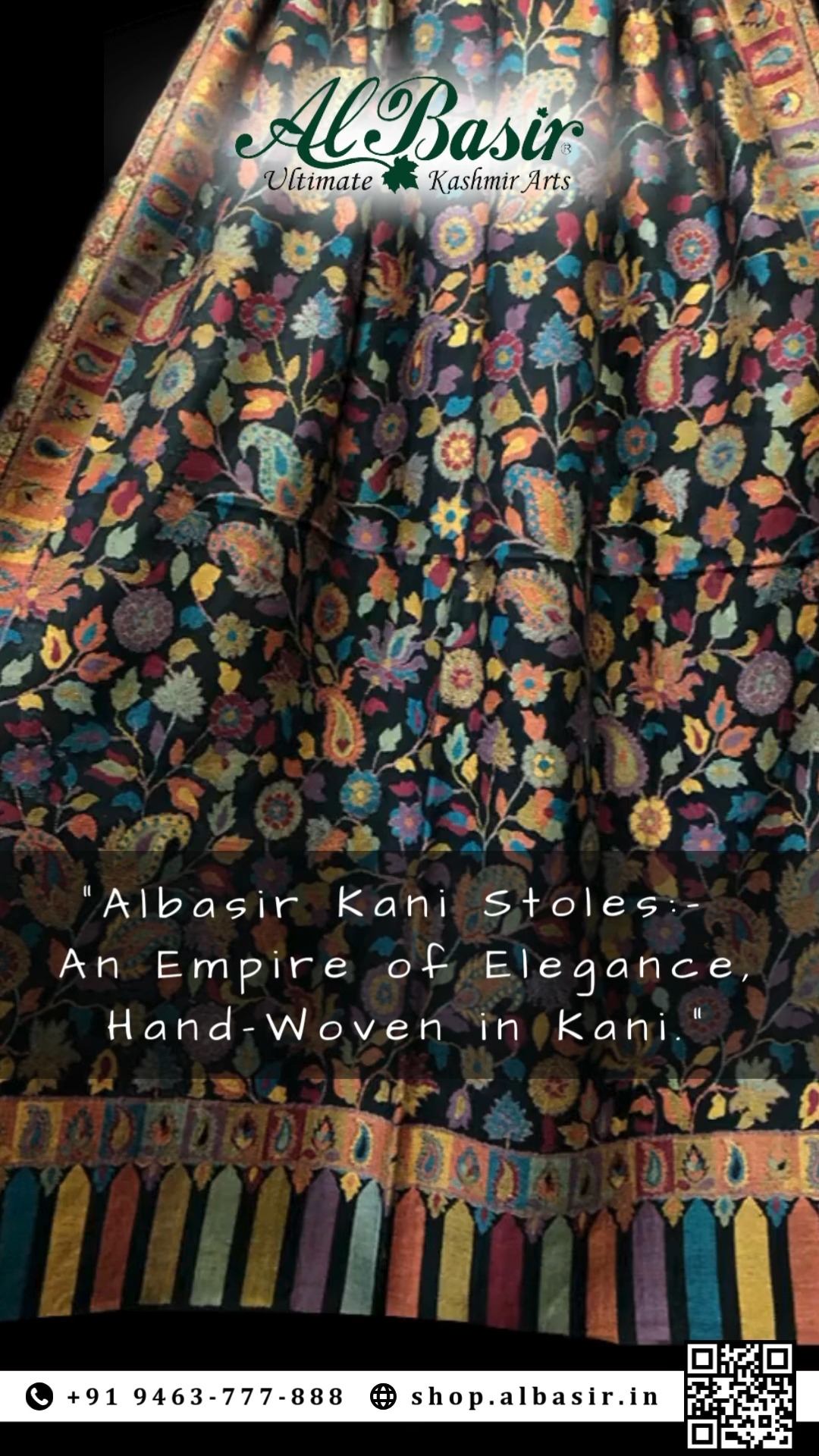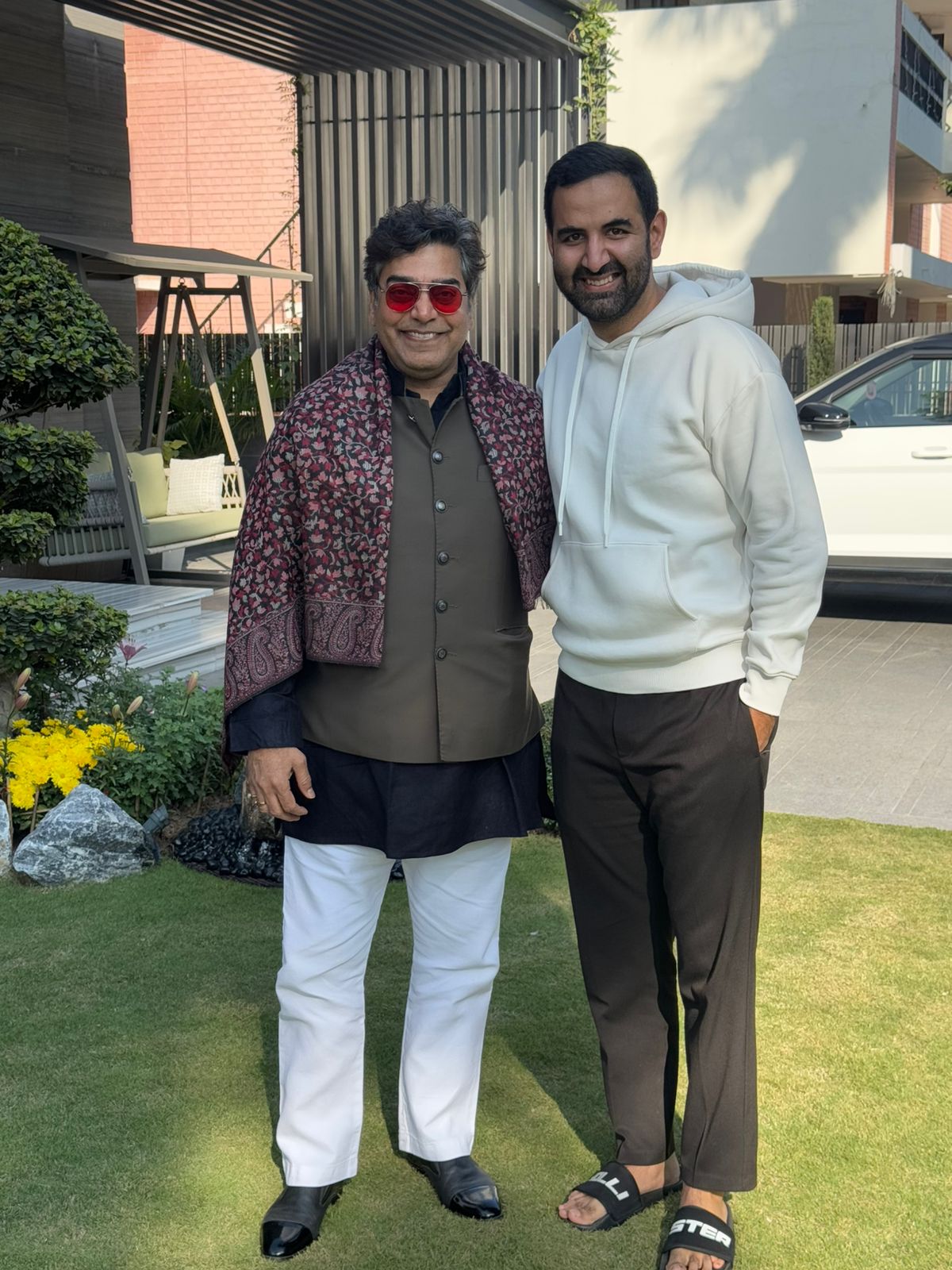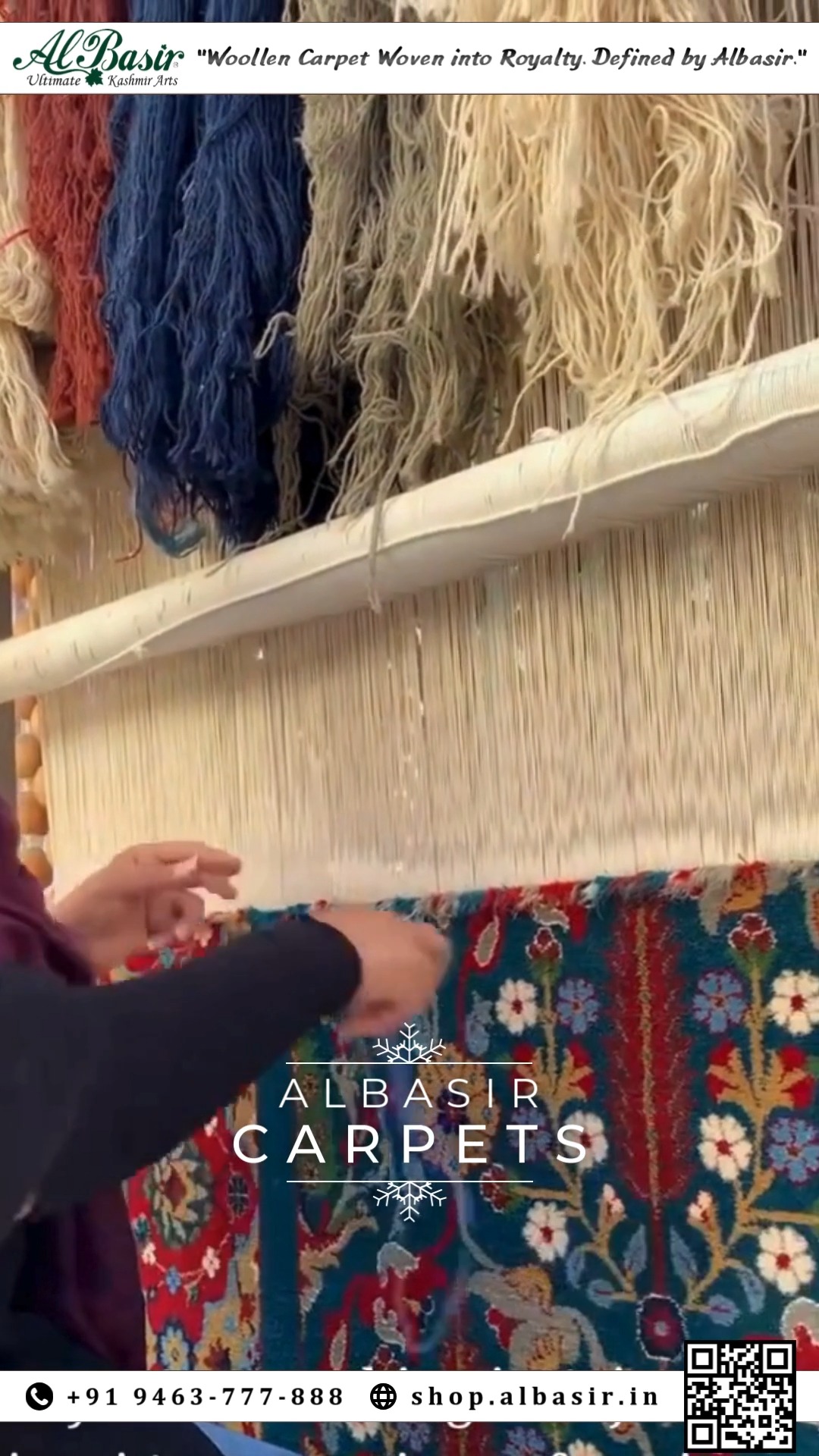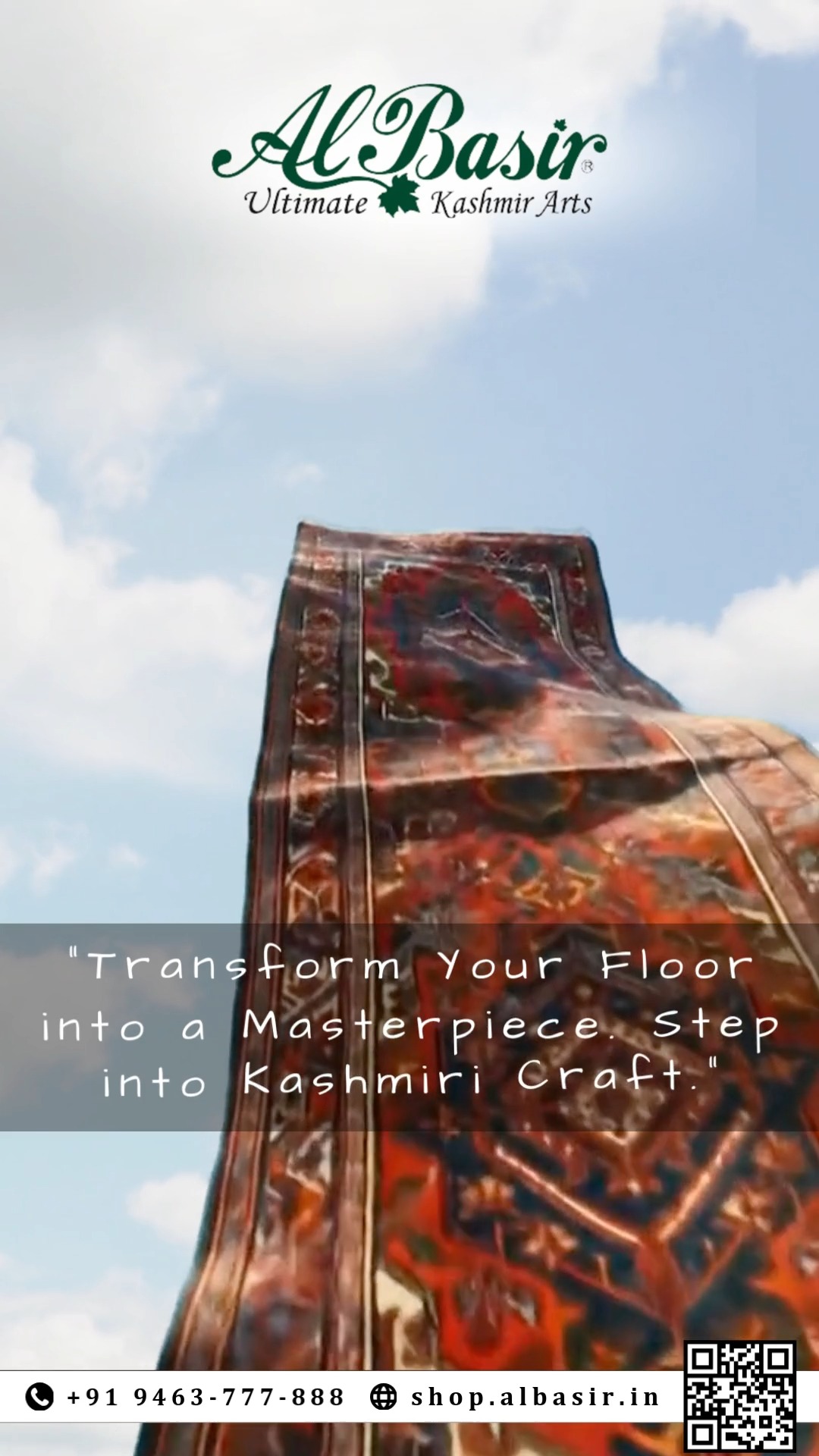Initially, the embroidery replicated the twill tapestry & required very minute observation to tell the difference between the two.
An embroidered shawl took quarter of the time to be ready compared to the kani shawls having a similar body of work. It was hence priced much lower than kani shawls. As far as looks were concerned, the embroidered shawls were spectacular. The decreased time to make an embroidered shawl resulted in considerably less taxation than the Kani shawls.
With the trend witnessing more elaborate designs for kani shawls, thereby increasing its cost, the embroidered shawls, with comparatively lower prices started gaining popularity. These embroidered shawls, were known as “amlikar shawls” & originated in the 18th century.
For embroidering the shawls, the design to be embroidered on the shawl is traced out with perforated lines. It is then imprinted onto the shawl using a fine powder in a contrasting color through the perforations. Once the tracing was removed, the outlines would be visible on the shawl for the embroiderer to start working on. These days however, the embroiderers may also use wooden blocks with carved out designs to make the tracings on the shawl.
Embroidery Gains Fame
The pinnacle of the embroidery was seen in the mid-19th century. It was when embroiderers developed a new technique, using which the shawl would have two different colors on either side of the shawl. These were called “do-runga” shawls meaning two- colored.
The technique implied imitating the kani weave on the wrong side of the embroidered shawl. This was done by interlacing a different colored thread through the fabric along the motif to mimic kani weave.
The making of the do runga shawls is still practiced however; the do runga embroideries done with Cashmere yarn have ceased to exist in Kashmir after the middle of the 19th century. In fact, this term is not recognized in Kashmir in the present day.
What All Types Of Pashmina Shawls Can We See From The Previous Era?
A majority of the shawls that have survived over the centuries belong to four different categories, namely, doshalas, patkas, rumals & jamawars.
Doshalas: these are also known as shoulder- mantles.
Patkas: these are also known as sashes & are longer & narrower than doshalas.
Rumals: these are also known as the square shawls
Jamawars: these are also known as the all-over designed garment pieces.
The patkas & doshalas, though have different dimensions, but their patterns are similar, each having a prominent pallas. The vertical border of the patka was found to be usually 1.5 times broader than the horizontal borders.
Pallas consist of decorative floral motifs repeated along the width of the fabric; then enclosed within two or more horizontal & vertical borders.
For an entire century, from the late 17th till the late 18th century, the body of the shawls was left plain. Just the vertical border ran along the length of the shawl.
Over the years, the designs evolved, filling up the body of the shawl with floral motifs & different patterns.
The jamawar pieces & the variety of shawls however, are absent of any pallas. Instead they include only four sided borders with decorative patterns on the body of the shawl
What Is The History Of The Pashmina Hand Embroiderers?
he hand embroiderers of Pashmina belong to families that have learned, taught & passed on the art through generations. These skilled artisans have been meticulously crafting exotic Pashminas, in time spanning over half a decade for a single shawl. The most refined pieces, with embroidery visible from both sides, are rarely available in the modern time. These double sided or “do-rukha” shawls were worn by the royal families. In fact, these were the ones that were presented to the foreign nobles & rulers as gifts.
The foreigners were so awed by these exquisite shawls that they were immediately won over by them. The elegant handicraft became the object of everyone’s desire.
These exquisite shawls were so loved by the French empress Josephine that she asked for more to present them to her friends at the royal court.
Were all the pashmina shawls displayed in the museums designed like that originally?


